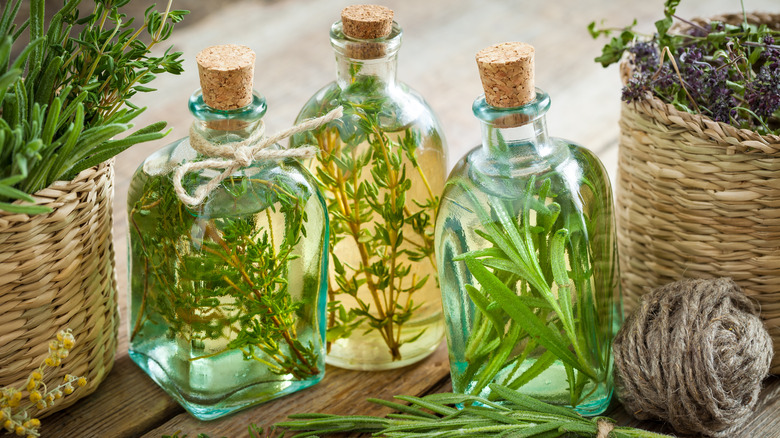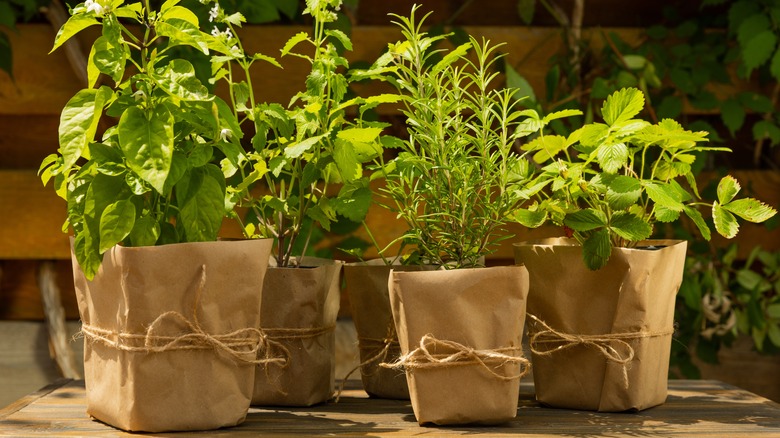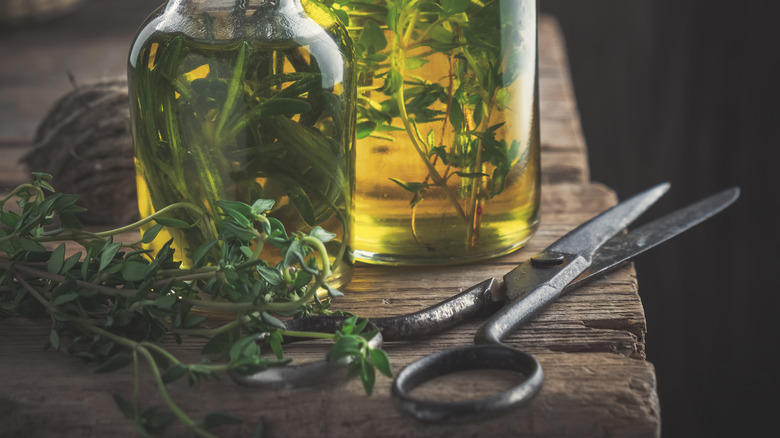Elevate Your Vinegar Game With Some Herbal Infusions
Like many things in the past, the story of vinegar is accidental: It involves a mighty acetic acid bacteria feasting on leftover booze. The first vinegar probably started out as sour wine, or vin aigre — "sour wine" in French — in the ancient wine regions of the Middle East. Indeed, before it really became a helpful ingredient in the culinary world, sour wine was enjoyed as a tart drink.
The beauty of bacteria found in vinegar is that they colonize a wide variety of wild plants, wherever natural sugars are found. This results in a huge diversity of vinegar cultures worldwide, from the famous balsamic vinegar of Modena to mirin in Japan. Even coconut can be turned into vinegar.
Natural vinegar has wonderful preservative properties and is a good way to pickle herbs, spices, or other flavorful ingredients. Perhaps that's why the Greeks and Romans made an ancient energy drink called posca, a mixture of wine vinegar, water, and herbs, that helped Roman troops stay alert and efficient. Although herbal tonic only scratches the surface of the possibilities infused vinegar opens up for us in the kitchen: from jazzy salad dressings to juicy marinades, it can be a great source of inspiration when cooking.
Choosing your vinegar and herbs
With herbal vinegar infusions, which vinegar and which herbs should you use? A good place to start is with the vinegar base; classic wine vinegar, red or white, as well as sherry and balsamic vinegar, are all kitchen staples that you'll most likely find in your pantry. Matching the flavor profile of vinegar and herbs is where things get very interesting. There are endless variations to play with but one general tip is worth keeping in mind: heavier, earthy herbs like rosemary, thyme, or sage are usually best when accompanied by dark vinegar, while lighter, more fragrant herbs like basil and mint are best friends with bright vinegar. This simple rule should help you build your confidence before venturing into more exotic combinations.
To spice things up (literally), try the addition of spices as well. Black pepper paired with rosemary adds a nice bite to the balsamic infusion, while a pinch of caraway seeds combined with dill adds a surprising roundness to white vine vinegar. We can always push it a step further by adding some fruit zest or a piece of the fresh ginger root — imagine the depth it would add to a cider vinegar infusion with fresh mint. Infused vinegar isn't only great for a classic French vinaigrette, but also as a marinade that can up your steak game.
How to make herbal vinegar infusion
Herbal vinegar is a guaranteed way to keep boredom out of your kitchen, and they look great on your shelf too! So how do you start your botanical collection of infused vinegar? Believe it or not, it's actually quite simple: all you need is a glass bottle, preferably with a resealable cork, vinegar, herbs, and a little patience.
If you're starting with fresh herbs, wash them thoroughly before patting them dry with a paper towel. For a pint of vinegar, you'll need about three sprigs of fresh herbs, and three ounces if you're using dried herbs. Fill your bottle with the vinegar of your choice and submerge your herbs in it. Give it a little swirl around and it's ready to be stored away. Usually, it will take around one to two weeks for the aromas to be fully released into the vinegar, but give it a taste along the way. If you want to add spices, it helps to lightly toast them first — the flavors come out much better that way. Once ready, take them for a test run with your favorite meals and start prepping a new batch immediately as it will run out pretty soon, you'll see.


